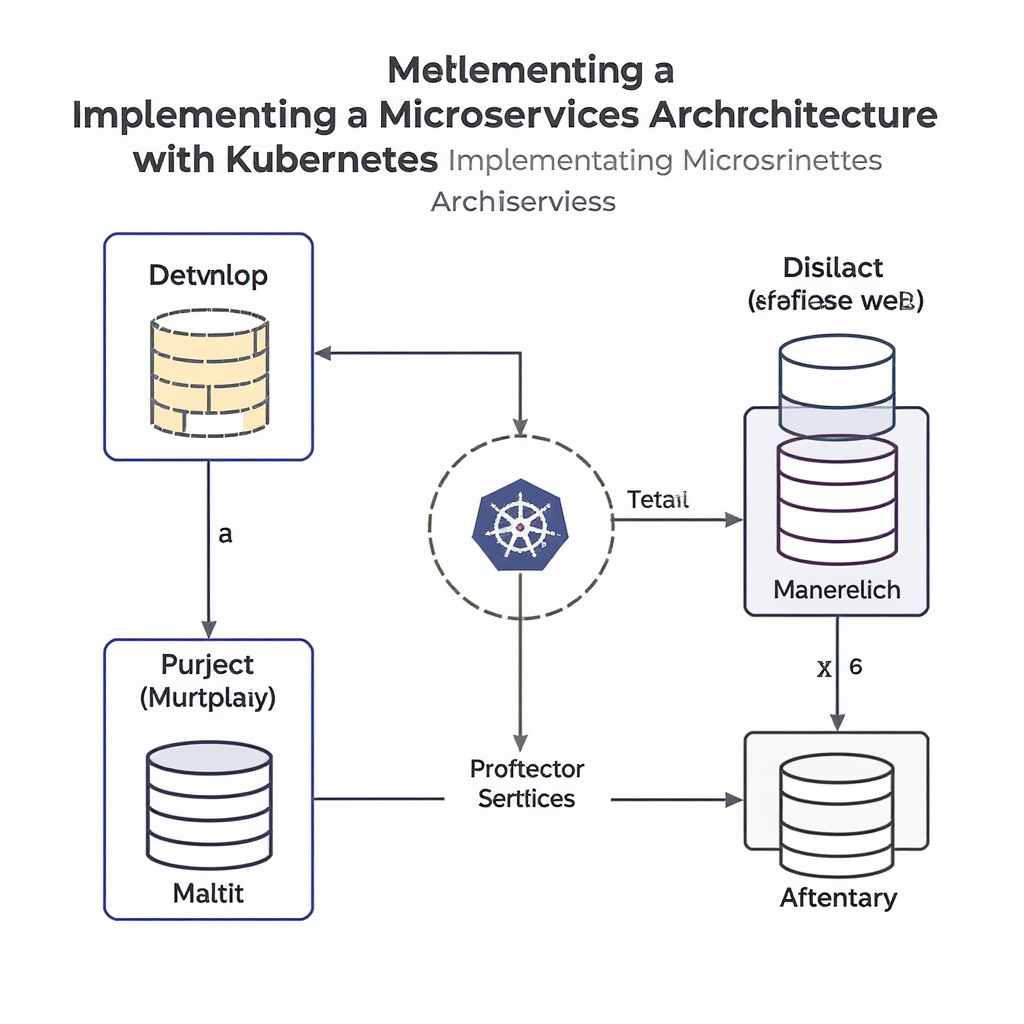This article explores the implementation of a microservices architecture using Kubernetes. We’ll delve into the benefits of this combination, focusing on how Kubernetes addresses the challenges inherent in managing a distributed system of microservices. We’ll cover the key aspects of designing and deploying microservices, including containerization with Docker, service discovery, and orchestration. The discussion will also touch upon essential considerations for scalability, resilience, and monitoring within a Kubernetes environment. Understanding these concepts is crucial for effectively leveraging the power of both microservices and Kubernetes to build robust, adaptable, and easily maintainable applications. We’ll examine practical strategies and best practices, guiding you through the process of migrating to or building a microservices-based architecture on Kubernetes.
Designing Microservices for Kubernetes
Effective microservice design is paramount for successful Kubernetes deployment. Each service should be independently deployable, scalable, and maintainable. This requires careful consideration of factors like service boundaries, communication patterns, and data management. The principle of single responsibility should guide the design, ensuring each microservice focuses on a specific business function. Communication between services should ideally be asynchronous, using message queues like Kafka or RabbitMQ to decouple services and enhance resilience. This approach prevents cascading failures and allows for independent scaling of individual services. Furthermore, proper API design, leveraging RESTful principles or gRPC, is essential for inter-service communication and maintainability. Careful planning of data management, potentially using separate databases per service or employing a shared database with careful schema design, is critical for scalability and data integrity.
Containerization with Docker
Docker plays a vital role in packaging and deploying microservices within a Kubernetes cluster. Each microservice is packaged into its own Docker container, ensuring consistency across different environments (development, testing, production). This approach isolates dependencies and reduces the risk of conflicts between services. The Dockerfile, defining the container’s image, must be carefully crafted to include only necessary dependencies, minimizing image size and improving deployment speed. Multi-stage builds can help separate the build process from the runtime environment, further optimizing image size. Utilizing Docker images from a registry, such as Docker Hub, can streamline the process and facilitate collaboration. Regularly updating images and employing security best practices are crucial for maintaining a secure and up-to-date application.
Kubernetes Orchestration and Deployment
Kubernetes takes center stage in orchestrating the deployment, scaling, and management of containerized microservices. Deployments are defined using YAML manifests, specifying the desired state of the application. Kubernetes ensures that the actual state matches the desired state, automatically scaling up or down based on resource utilization and demand. Features like rolling updates and rollbacks minimize downtime during deployments, ensuring high availability. Kubernetes also manages service discovery, allowing services to locate and communicate with each other automatically. Using Kubernetes services and Ingress controllers, external access to microservices can be managed securely and efficiently. Employing strategies like canary deployments and blue-green deployments further enhances resilience and enables gradual rollouts of new versions.
Monitoring and Logging
Effective monitoring and logging are crucial for maintaining the health and performance of a microservices architecture on Kubernetes. Centralized logging allows for efficient troubleshooting and performance analysis. Tools like Elasticsearch, Fluentd, and Kibana (EFK stack) or the more modern ELK stack are commonly used to aggregate and analyze logs from various microservices. Metrics monitoring, using tools like Prometheus and Grafana, provides real-time insights into resource utilization, performance bottlenecks, and potential issues. These tools can be integrated with Kubernetes to monitor cluster health and individual service performance. Alerting mechanisms should be set up to notify administrators of critical events, ensuring timely intervention and minimizing service disruptions. Detailed logging and robust monitoring are essential for maintaining a stable and high-performing application.
| Tool | Function | Category |
|---|---|---|
| Docker | Containerization | Container Runtime |
| Kubernetes | Orchestration and Deployment | Orchestration |
| Prometheus | Metrics Monitoring | Monitoring |
| Grafana | Dashboarding and Visualization | Monitoring |
| Elasticsearch, Fluentd, Kibana (EFK) | Centralized Logging | Logging |
Conclusion
Implementing a microservices architecture with Kubernetes offers significant advantages, including improved scalability, resilience, and maintainability. By carefully designing microservices, leveraging Docker for containerization, and utilizing Kubernetes for orchestration, you can create a robust and adaptable application. Effective monitoring and logging are crucial for ensuring the ongoing health and performance of your system. Remember that successful implementation requires a deep understanding of these technologies and a commitment to best practices. Careful planning, iterative development, and continuous monitoring are key to realizing the full potential of this powerful combination, leading to a more efficient and scalable software development lifecycle. Through careful consideration of service design, containerization, orchestration, and monitoring, you can build and maintain highly available, scalable, and manageable applications. The strategic combination of these technologies empowers developers to build modern, robust, and scalable systems.
References
Elastic Stack (Elasticsearch, Logstash, Kibana)
Image By: Black Forest Labs






